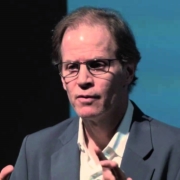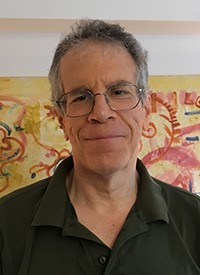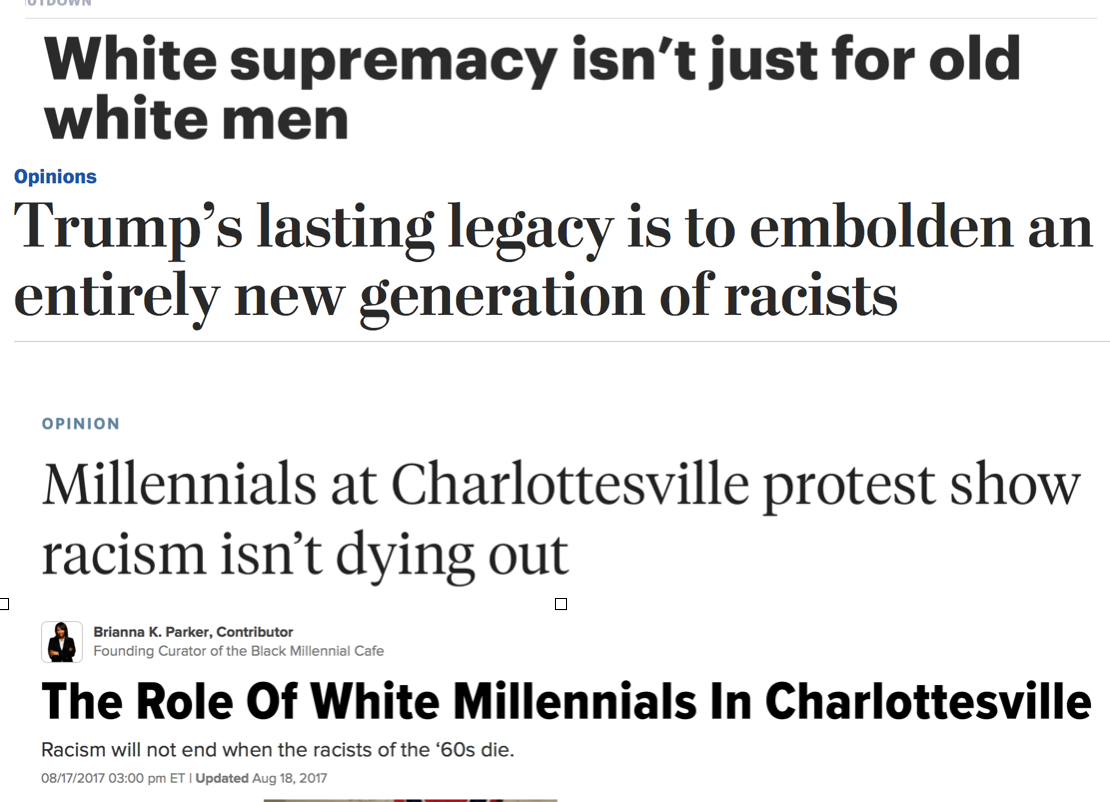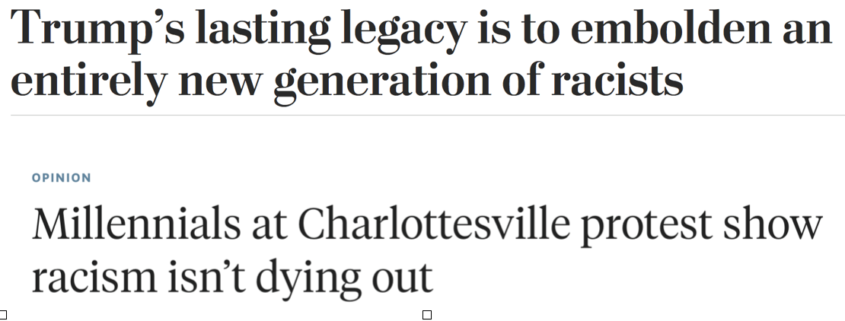Studying the Gentile: Fanciful Pseudoscience in the Service of Pathologizing the Covington Boys
“One person questioning the truth of the Holocaust is one too many.”
Karen Pollock, Holocaust Educational Trust, January 2019
In Studying the Jew (2006), Alan Steinweis’s slim, Harvard-published text on the scholarly study of Jews under the Third Reich, the author laments “the perversion of scholarship by politics and ideology” and its service in the goals of “exclusion and domination.” While some of the anecdotal material presented in the book is fascinating, especially its prosopographies of what one reviewer called the “clearly brilliant” German scholars who undertook such work, the overarching message of Studying the Jew is that one should, under no circumstances whatsoever, study the Jew. That Steinweis felt such a message was in any way necessary in 2006 is a testament to the same paranoia in which the fevered Jewish inability to let go of the past becomes the frantic injunction unto the Gentile to “Never Forget.” Steinweis’s limp appeals to contemporary relevancy aside, by 2006 the kind of patient and methodical Judenforschung produced by Édouard Drumont, Henry Ford, Hillaire Belloc, and the scholars of the 1930s, had indeed become a thing very much of the distant past — Kevin MacDonald’s remarkable 1990s trilogy being the exception that proves an otherwise solid rule. By the 1960s, Jews had effectively monopolized the study of their own history and sociology in the post-war, modern incarnation of “Jewish Studies,” and quickly followed a self-congratulating, navel-gazing, agenda-driven, victim-orientated trajectory in the same fashion as their later counterparts in Women’s Studies, Chicano Studies, and Black Studies. Serious critical study of the Jews vanished from academia and mainstream culture.
Curiously, however, around the same time that serious critical study of Jews vanished from campuses and newspapers, a new trend emerged: studying the Gentile. I was strongly reminded of this recently during the debacle surrounding the Covington Catholic High School trip to Washington D.C. The facts of this incident are now so well known that they need no further regurgitation here. It should suffice to mention that large sections of the media were incensed that the school’s students had enough self-respect to hold their ground against a group of ludicrous but abusive Black Israelites, as well as a Native American who apparently thought the best way to mediate the situation and reduce tension would be to bang his war drum and chant loudly mere inches from the palefaces. The aftermath was a true exercise in the media manipulation of anti-White hatred, something that seemed to reach a zenith when America’s most prominent African-American Zionist, and AIPAC house Negro, Bakari Sellers, heroically broke from stereotypes of ignorant Black thuggery to call for one of the White children to be punched in the face. Stunning and brave.
At the Guardian meanwhile, attention momentarily turned away from the beating of White children to the more sedate subject of brainwashing them. In an article titled “How should parents teach their kids about racism?,” the author, panicked by the children of Covington High, turns for advice to two academics working in the field of ethnicity perception among White children. Of course, both of these academics just happen to be Jewish. The first is Evan Apfelbaum, Boston University’s Jewish expert in the study of the psychology of the little goyim. The article states:
Evan Apfelbaum, an associate professor at Boston University’s Questrom School of Business focused on social psychology and diversity, agreed that it’s good to start teaching children about race when they’re young. “Having these tough, uncomfortable conversation at home in advance, in a structured setting, is one way to help prepare kids for facing these types of complex things in the real world,” he said. Parents can use such viral videos that demonstrate inappropriate behavior as an opportunity to have a conversation with their children about racism, Apfelbaum added. “When things go viral, there’s an opportunity for learning,” he said.
Unfortunately for Apfelbaum, the emergence of further footage from this particular event revealed that the opportunity for learning involved the knowledge that adult Black men are quite willing to scream “faggots” at White children, presumably because those children have the mysterious ability to speak in complete sentences. A further lesson was that elderly Native Americans are not full of profound wisdom uttered in the staccato prosody of so many film depictions, but are instead profoundly anti-social and fully prepared to shamelessly lie about school children in order to solicit media attention.
The second of the Guardian’s consulted experts was Dan Siegel, a truly ominous Jewish UCLA psychiatrist with a not-sinister-at-all interest in how the “remodeling” of the teenage brain can be interfered with in order to prevent in-group attachments:
The “remodeling” of the teenage brain into an adult brain entails four core changes: emotional sparks, social engagement, novelty-seeking and creative exploration — what Siegel calls “Essence”. The four changes represent an uptick in passion, drive to be a part of a group and a desire for new experiences that is normal for teenagers. These changes can be positive or negative, depending on how they’re fostered, Siegel said. The development also heightens what psychologists call “in-group, out-group distinction”, or the tendency to lump oneself in social groups, he added. When a person feels like their “in-group” is threatened by an “out-group” — people part of a group they don’t identify with — there’s a chance they will dehumanize the out-group. “Adolescents are equally prone to having this in-group-out-group distinction” as adults are, Siegel said. “Essence” exacerbates the distinction, and that’s what can be seen in the viral videos, he added. In these videos, there’s evidence of “emotion they don’t know how to control, collaboration where they give up morality to gain membership, novelty-seeking which drives them to do things that are really dangerous … and following ideals as they push against things that have them not think logically”, Siegel said.
This is probably one of the most fanciful pieces of Jewish psychological quackery I’ve ever read, and I’ve read a lot of it. Now that we have footage covering the entirety of the episode in D.C., it’s clear that the young men from Covington Catholic High School showed great restraint and emotional control in the face of provocation and abuse, and the “smirking” student can be seen on camera urging his (compliant) fellow students to maintain order and not engage with the Black Israelites or other provocateurs. Siegel, meanwhile, claims he sees evidence of “emotion they don’t know how to control, collaboration where they give up morality to gain membership.” This is just a Jewish intellectual activist refusing to look at the footage objectively, and thus presenting an entirely false picture in order to pathologize those he feels a pre-existing antagonism towards.
Siegel’s nonsense, like a lot of Jewish pseudo-science, would be laughable if it wasn’t so obviously malicious. Aside from his ‘Essence’ scam, Siegel operates a pro-diversity “mindfulness wheel of awareness” methodology designed to brainwash clients into abandoning any sense of ethnic identity. In an interview with Forbes, Siegel explains:
You want to expand your “circle of identity” so that within the phrase “like me” you include a lot of diversity. What I would say is the plane of possibility is accessed more when people integrate consciousness. People are too confined, so they are excessively differentiated and not accepting the value of other life forms including other humans that do not fit into that initial high plateau of identity. What has been fascinating about doing the wheel of awareness practice — and I think this is consistent with some of the research about reducing some of the implicit racial bias [editor’s note: a field rife with failure to replicate] with mindfulness practices— is when people access the hub, they’re gaining more access. They are more readily accessing the plane of possibility and in the plane, there is no racism. In the plane, there is this experience of reality that embraces the fluidity of identity. That is, “you” are made up of people who are not your racial background. You are people who don’t speak your same language. You are people who of different religions. It’s not just that they’re different and that is okay. It’s that you are both part of the same sea of potential or the plane of possibility. What has been beautiful about explaining this is that people get a feeling of relief that they can now basically be in a state of — and not to get too gooey — love and acceptance.

Dan Siegel: “You want to expand your “circle of identity” so that within the phrase “like me” you include a lot of diversity.”
Siegel’s methodology then, if one can call it that, is to convince a client/patient that they can achieve love and acceptance by believing that they are many rather than one — something that sounds suspiciously like an incitement to schizophrenia. You aren’t really a White man — you’re also a Muslim Pakistani, an African woman, and a Chinese child, so just embrace “the fluidity of identity” and feel the “love and acceptance.” Again, according to Siegel, in order to experience a “reality that embraces the fluidity of identity” you basically need to see yourself as having a multicultural mind (“you” are made up of people who are not your racial background. You are people who don’t speak your same language. You are people who of different religions.”)
Perhaps the most terrifying thing about Siegel is not just that he’s an excellent example of the endlessly fertile Jewish capacity for producing shamelessly turgid pseudo-intellectual garbage, but that he’s extremely highly regarded by the mainstream academic and scientific establishment, even receiving an invitation to address the Vatican’s Pontifical Council for the Family on the subject of child psychology.
What are the activities of Apfelbaum and Siegel if not, to borrow the phrasing of Steinweis, “the perversion of scholarship by politics and ideology” and its service in the goals of “exclusion and domination”? The truth of the matter is that Jews have invested vast amounts of energy in “studying the Gentile” since at least the late 1940s, commencing in earnest with the Frankfurt School and the Studies in Prejudice series. Steinweis’s last chapter is titled “Pathologizing the Jew,” and consists of 29 pages. But how many pages could we fill with a chapter titled “Pathologizing the Gentile”? Arguably, all 544 pages of Kevin MacDonald’s The Culture of Critique concern precisely this problem, and yet one gets the impression the subject matter is far from exhausted. Indeed, just recently I read one of the most nauseating Jewish-authored, Freud-inspired tracts I’ve ever encountered, a piece by Adelphi University’s Lawrence Josephs titled “Whiteness as Pathological Narcissism.” Apparently co-authored with Arienne E. Miller, a mixed-race academic at the University of San Diego’s Lesbian, Bisexual, Transgender and Queer Research Consortium, the piece argues that “white racial superiority, white privilege, and repudiated white racial identity are forms of pathological narcissism driven by an unconscious desire to be a triumphant oedipal winner and to avoid, at any price, being a disgraced oedipal loser.”

Lawrence Josephs: Pathologizing the Gentile
Even momentarily setting aside pathologizing scholarly activism from the universities, another remarkable aspect of “studying the Gentile” is the seemingly endless number of surveys conducted by Jews on Europeans, Americans, Canadians etc. In fact, one might say that Jews are obsessed with monitoring the opinions of their hosts. Some of the most familiar surveys are the anti-Semitism polls of organizations like the ADL and the Institute for Jewish Policy Research, in which Europeans are given a series of questions such as: Do you believe Jews are more loyal to Israel? But host populations are surveyed on an even broader basis, the most recent UK example being a poll on the so-called Holocaust. In this particular case, it was found that 5% of Britons believe the Holocaust was a complete hoax, that 8% believed the scale of Jewish casualties had been grossly exaggerated, and that 50% of those were unable to state how many Jews had been killed during World War II.
In some ways, these figures are remarkable. When one considers the seven decades of effort that Jews have put into propagating the magical number of six million victims, it must have been quite the shock that half of Britain couldn’t remember it. Perhaps the bigger shock was that 20% of the French population had never heard of the Holocaust (presumably because most of that 20% is African or Arab). Yet another Jewish survey, this time of Americans, found that 9% of millennials were unaware of the Holocaust narrative, 15% believed that the Holocaust had happened but Jews had provoked it, and that 4% of American adults believed “the Final Solution” had something to do with Mathematics.
I’m assuming, of course, that the published figures are accurate. It’s perfectly possible that figures like these are produced with cynicism as well as regularity, like those on anti-Semitism, in order to put pressure on governments for further “education” on these subjects. It could be that these are mere tactics, intended to stoke the propaganda engine. This much appears to be hinted in the statement of Karen Pollock, of the Holocaust Educational Trust, who told the Guardian: “One person questioning the truth of the Holocaust is one too many, and so it is up to us to redouble our efforts.” Behind this astonishing statement, and behind all efforts to “study the Gentile,” is an implicit accusation. Setting aside the arrogance of demanding universal adherence to their historical narrative, the methodologies and pseudo-interpretations of poll data carry an accusation that reaches into the deep past as well as into the present and future. Jews feel justified in “studying” and pathologizing the Gentile because there is something “wrong” with the latter. The attitudes and psychologies of the Europeans have to be monitored, examined, and manipulated, so the reasoning goes, in order to prevent the European pathologies from targeting innocent, blameless Jews, as they have done so many times in the past. “Never Again” and “Never Forget” are insults and accusations, as much as subliminal propagandistic instructions.
Intense suspicion and paranoia are key here, and in a way, they relate very intimately to the events in D.C. involving the White boys of Covington Catholic High School. For all the talk of “old White men” in boardrooms, I’ve believed for some time that the real threat perceived by our opponents is young White men, in particular, the cohort of young White men that will comprise the last generation of the White majority. Older White CEOs, being wealthy and visible, are a useful propaganda foil, but in truth they have almost universally bought into globalization and multiculturalism and are therefore tame subjects of the new multicultural world order. Old White CEOs might be useful to agitate greying feminists and mulatto “cultural studies” students, but I don’t think they keep Apfelbaum, Siegel, or Pollack awake at night, or at least not to the same degree as the haunting vision of a group of confident young White men — just think of reactions to the tiki-torch images from Charlottesville.

Millennial Whites, and those younger, have lost, are losing, and will lose the most from the demographic tipping point that many Western nations are now approaching. In economic and social terms, many already have no hope of even remotely matching the way of life enjoyed by their grandparents. Stable jobs that paid enough to support a family, ethnically coherent and cohesive nations, sexual and relational mores that enabled the raising of children in stable homes — all these things and more and crumbling, in ways more or less visible but ever-present. The reaction of young Whites to such a massive disinheritance is being closely watched and is perhaps the forefront of current “studies of the Gentile” where it has spilled over into becoming a central issue for the Left.
In light of this fact, it was all quite predictable that the boys of Covington Catholic High School were seized upon at the first available opportunity, and by all the usual suspects. They were waiting for the boys of Covington in the same way they were waiting for Julian von Abele weeks earlier, and in the same way they were waiting for Charlottesville, and in the same way they will wait for the next young White man or men to leave themselves open to the most vile misrepresentations. All of these events ultimately ended up as egregious media distortions, that were then utilized as tools to confirm and reinforce notions of the danger of the disinherited. It will be the same for the next victim. Accompanying their images on screen, Ashkenazic “scholars” will crawl forth once more, proffering variations on malicious, mellifluous nonsense and universalist banalities. Steinweis may have gotten his 29 pages published by Harvard, but one day we will need entire libraries to record how we once endured the “Study of the Gentile.”






Comments are closed.